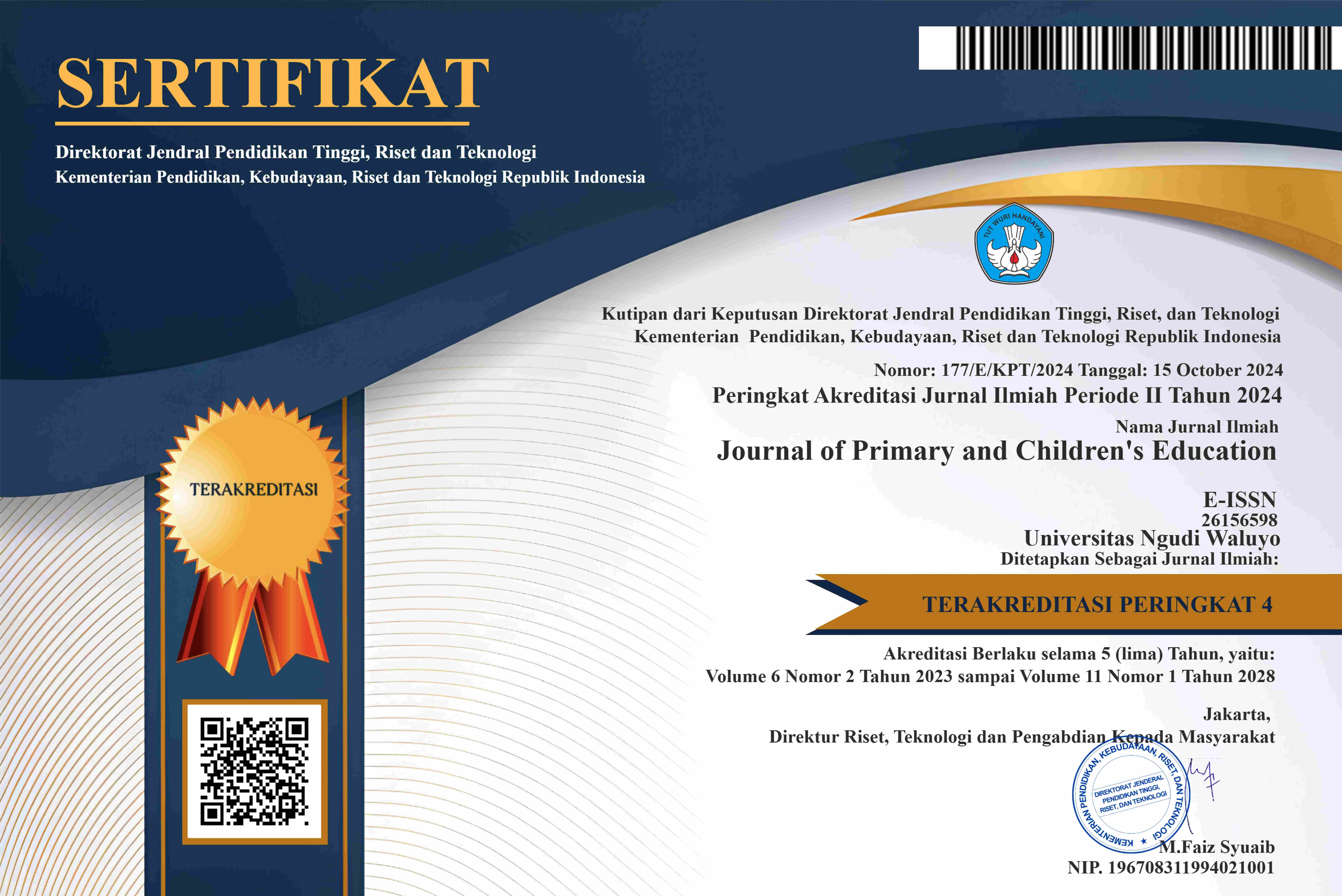PENERAPAN METODE PERMAINAN UNTUK MENINGKATKAN HASIL BELAJAR MATEMATIKA MATERI BANGUN RUANG PADA SISWA KELAS I SD NEGERI POPONGAN KECAMATAN BRINGIN KABUPATEN SEMARANG TAHUN PELAJARAN 2021/2022
DOI:
https://doi.org/10.35473/jnctt.v5i1.1545Abstract
The background of this research is that there is still a lack of interest and student learning outcomes in mathematics subjects based on the results of observations and interviews. This study aims to improve student learning outcomes in mathematics lessons on building materials for first grade students at SD Negeri Popongan through the game method.
This type of research is Classroom Action Research (CAR). The research subjects were the first grade students of SD Negeri Popongan, totaling 37 students in the 2021/2022 academic year. The object of the research is the result of student learning in mathematics lessons on building materials through the game method. This study consisted of two cycles, where each cycle consisted of two meetings. The instruments used to measure the improvement of students' mathematics learning outcomes are using test instruments and non-test instruments in the form of observation sheets, field notes, and documentation. The method of data collection is obtained through planning, action, observation/observation and reflection. Observations were carried out simultaneously with the action, then the researcher reflected on the results of the test. The value data obtained when the action took place between cycles I and II were averaged, so that it was clearly seen that the student's score in each cycle was clear. The completeness of student learning outcomes in the first cycle obtained 62.16% and in the second cycle the student learning outcomes showed an increase to 76.76%, while the value of learning outcomes obtained in the first cycle with an average of 66.76, and the cycle II with an average of 76.76, so it can be said that the use of the game method in improving students' mathematics learning outcomes is in the successful category in cycle II, so the research ends in cycle II. Based on the results of the research above, it can be concluded that the application of the game method can improve the learning outcomes of class I students in building materials.
References
Baety, Janice J. 2013. Observasi Perkembangan Anak Usia Dini. Jakarta: Kencana.
Depdiknas. 2006. Permendiknas No.22 Tahun 2006 Tentang Standarisasi Sekolah Dasar Dan Menengah. Depdiknas, Jakarta.
Farida, Umma. 2005. Mengembangkan Kreativitas Anak. Jakarta: Pustaka Al- Kautsar.
Marsigit. 1995. Revitalisasi Pendidikan Matematika (Revisi). Yogyakarta: Jurusan Pendidikan Matematika, FPMIPA IKIP YOGYAKARTA.
Purwanto. 2015. Evaluasi Hasil Belajar. Yogyakarta: Pustaka Pelajar.
Sadirman, Arief S, dkk. 2009. Media Pendidikan. Jakarta: PT Raja Grafindi Persada.
Sanjaya, Wina. 2010. Strategi Pembelajaran Berorientasi Standar Proses Pendidikan. Jakarta: Kencana.
Slameto. 2003. Belajar dan Faktor-faktor yang mempengaruhinya. Jakarta:Rineka Cipta
Sudjana, Nana. 2004. Penilaian Hasil Proses Belajar Mengajar. Bandung: PT Remaja Rosdakarya.
Suhana, Cucu, and Nanang Hanafiah. 2012. Konsep Strategi Pembelajaran. Bandung: PT. Refika Aditama.
Syah Muhibbin. 2011. Psikologi Belajar. Jakarta: PT. Raja Grapindo Persada.
Yuliani Nurani, Sujiono dan Bambang Sujiono. 2010. Bermain Kreatif Berbasis Kecerdasan Jamak. Jakarta: PT Indeks.
Published
How to Cite
Issue
Section
License
Copyright notice:
- Authors retain copyright and grant the journal right of first publication with the work simultaneously licensed under Creative Commons Attribution License that allows others to share the work with an acknowledgement of the work's authorship and initial publication in this journal.
- Authors are able to enter into separate, additional contractual arrangements for the non-exclusive distribution of the journal's published version of the work (e.g., post it to an institutional repository or publish it in a book), with an acknowledgement of its initial publication in this journal.
- Authors are permitted and encouraged to post their work online (e.g., in institutional repositories or on their website) prior to and during the submission process, as it can lead to productive exchanges, as well as earlier and greater citation of published work (The Effect of Open Access)







